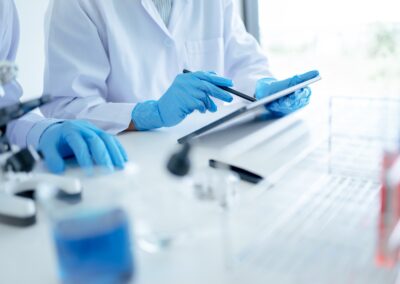Earlier this month, the Ministry of Health and Family Welfare, Government of India released a draft of the Drugs, Medical Devices and Cosmetics Bill, 2022 (“Bill”).[i] This Bill overhauls the pre-independence legislation enacted by the Central Legislative Assembly, the Drugs and Cosmetics Act, 1940,[ii] (“D&CA”) which is the primary legislation for regulation of drugs, biologics and medical devices at the moment. Back when D&CA was introduced, the objective was to ensure that all drugs and cosmetics are marketed in India in a secure and efficient fashion and are compliant with international standards. The associated rules with the statute are the Drugs and Cosmetics Rules, 1945, which classify medications into schedules along with instructions on storage, presentation, prescription etc. While there are legally binding standards for drugs, there are no standards for medical devices including no way to prosecute manufacturers of medical devices. The Bill addresses this shortcoming, envisioning to oust D&CA with the aim to facilitate an appropriate channel to accommodate adoption of new technologies.
The Bill is a comprehensive legislation, which has been proposed to maintain the dynamism of law with changing times, technology and needs of today. The Bill came about based on the recommendations of a committee, led by the Drug Controller General of India, with the objective of “consolidating all laws relating to the import, manufacture, distribution and sale of drugs, medical devices and cosmetics to ensure their quality, safety, efficacy, performance and clinical trial of new drugs and clinical investigation of investigational medical devices and for matters connected therewith or incidental thereto.”[iii] The Bill has been introduced and published for public comments which are invited until August 22, 2022. NITI Aayog– National Institute for Transforming India, cited three reasons for introducing the Bill:
- The existing law (D&GA) is outdated with better scope for regulating medical devices;
- Lack of expertise to ensure safety and efficacy of medical devices;
- Lack of resources to check the quality of devices.
Some of the key aspects of the new Bill therefore concern regulating the medical devices. The Bill seeks to regulate all medical devices as separate from drugs. The definition clause of the Bill provides with an inclusive definition of the “medical devices” under Section 3(zd).[iv] Under D&CA, certain notified medical devices are regulated as drugs. What the draft Bill executes comes from the widened definition of ‘medical devices’ under the ambit of Medical Devices Rules, 2017 (MDR 2017) which was notified in 2020. Per the new definition, all medical devices falling within the scope of this definition, will be regulated. Another significant change introduced by the Bill is the scope pertaining to quality of medical devices. This is more so important for manufactured and imported medical devices which do not conform with the prescribes standards,[v] or are spurious,[vi] misbranded,[vii] prohibited[viii] or adulterated.[ix]
When it comes to obtaining marketing approvals for investigational medical devices, including in-vitro diagnostic medical devices, the Bill requires undertaking clinical investigation.[x] This could however be by-passed if the Central Licensing Authority grants a waiver. A point of distinction between the MDR and the draft Bill is that the latter does not distinguish between in-vitro diagnostic devices and medical devices for the purpose of safety and efficacy studies. The Bill regulates both categories uniformly. The Bill also provides with specific penalties in case of violations of its provisions.[xi]
Another advancement the Bill makes is the creation of independent authorities and boards for regulating medical devices. This is a parallel regimen from the existing manner of regulating medical devices where the drug authorities regulate medical devices. The Bill also proposes to establish the Medical Devices Technical Advisory Board (‘MDTAB’) with its constitution of which is laid down in Section 6 of the Bill. This Board includes members with technical knowledge of medical devices, members from the industry and experts from the field of biomedical technology, etc. nominated by the Central Government. The Bill also proposes creation of Central and State Medical Devices Testing Center for testing and evaluation of medical devices.[xii] The function for these centers remains like the Centra Medical Devices Testing Laboratory and other authorized laboratories under the MDR.
With many other relevant provisions, the Bill has been proposed with the objective of ensuring that medical products are sold in the country in a safe and effective manner while they conform with the prescribed quality standards. Are you somebody looking for regulatory approvals in India in the Industry? EMMA is a leading compliance consulting firm with cost-effective solutions for regulatory affairs, quality systems, remediation, regulatory filings, and submissions. At EMMA International, we aid companies working towards research and development of drugs, medical devices, and biologics, to meet such compliance requirements. If you need assistance working through the regulatory requirements and approvals, contact EMMA International at 248-987-4497 or email info@emmainternational.com today!
[i] Ministry of Health and Family Welfare, Government of India, Draft of New Drugs, Medical Devices and Cosmetics Bill, 2022. Available at: https://main.mohfw.gov.in/newshighlights-97 (last accessed: August 19, 2022).
[ii] The Drugs and Cosmetics Act, 1940. Available at- https://legislative.gov.in/sites/default/files/A1940-23.pdf. (Last accessed: August 19, 2022).
[iii] Supra at n1.
[iv] Section 3(zd), The Drugs, Medical Devices and Cosmetics Bill, 2022.
“3(zd) Medical device- (a) all devices including an instrument, apparatus, appliance, implant, material or other article, whether used alone or in combination, including a software or an accessory, intended by its manufacturer to be used specially for human beings or animals which does not achieve the primary intended action in or on human body or animals by any pharmacological or immunological or metabolic means, but which may assist in its intended function by such means for one or more of the specific purposes of- (i) diagnosis, prevention, monitoring, treatment or alleviation of any disease or disorder; (ii) diagnosis, monitoring, treatment, alleviation or assistance for, any injury or disability; (iii) investigation, replacement or modification or support of the anatomy or of a physiological process; (iv) supporting or sustaining life; (v) disinfection of medical devices; (vi) control of conception; (b) in-vitro diagnostic device which is a reagent, reagent product, calibrator, control material, kit, instrument, apparatus, equipment or system, whether used alone or in combination thereof intended to be used for examination and providing information for medical or diagnostic purposes by means of examination of specimens derived from the human bodies or animals.”
[v] Section 126, The Drugs, Medical Devices and Cosmetics Bill, 2022.
[vi] Section 129, The Drugs, Medical Devices and Cosmetics Bill, 2022.
[vii] Section 127, The Drugs, Medical Devices and Cosmetics Bill, 2022.
[viii] Section 130, The Drugs, Medical Devices and Cosmetics Bill, 2022.
[ix] Section 128, The Drugs, Medical Devices and Cosmetics Bill, 2022.
[x] Section 3(h) (defines “clinical investigation”) ; Section 139, The Drugs, Medical Devices and Cosmetics Bill, 2022 (Conduct of Clinical Investigation).
[xi] Section 144, 145 & 146 The Drugs, Medical Devices and Cosmetics Bill, 2022.
[xii] Section 10 and 91, The Drugs, Medical Devices and Cosmetics Bill, 2022.






